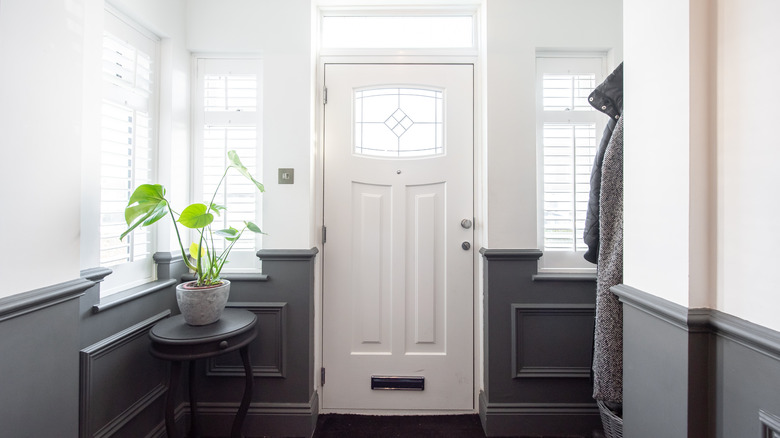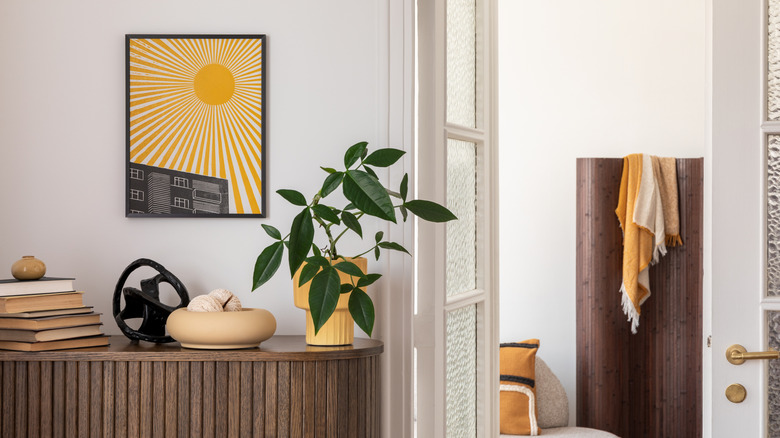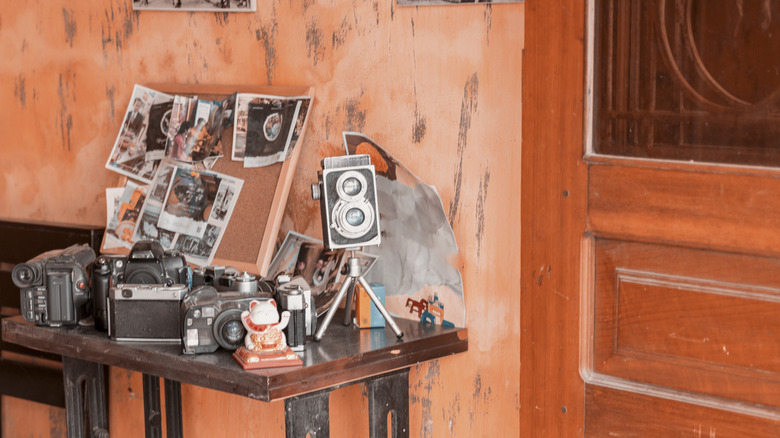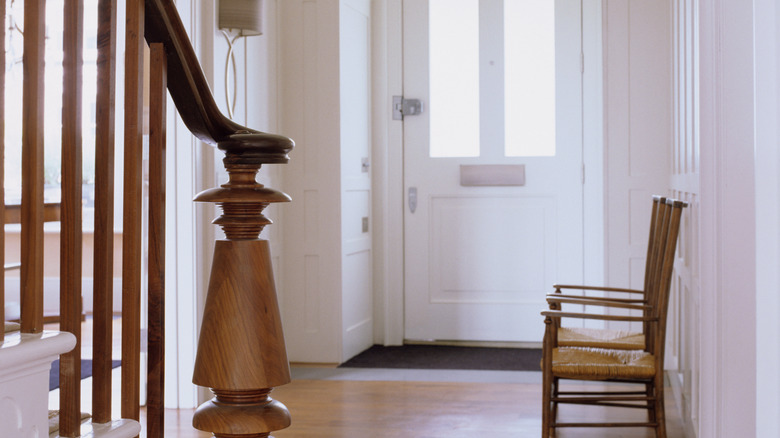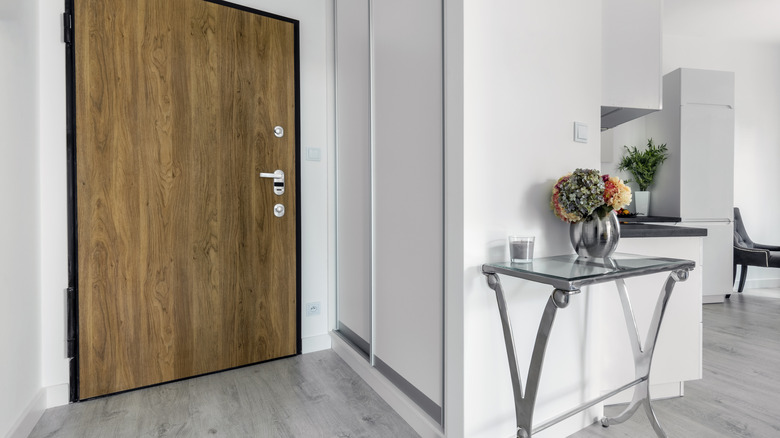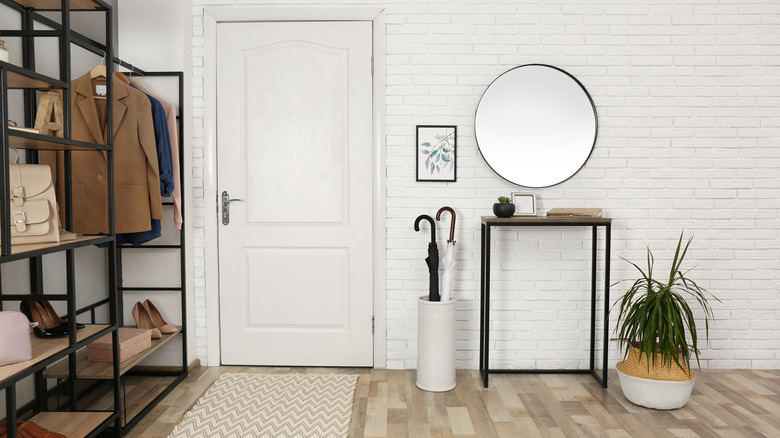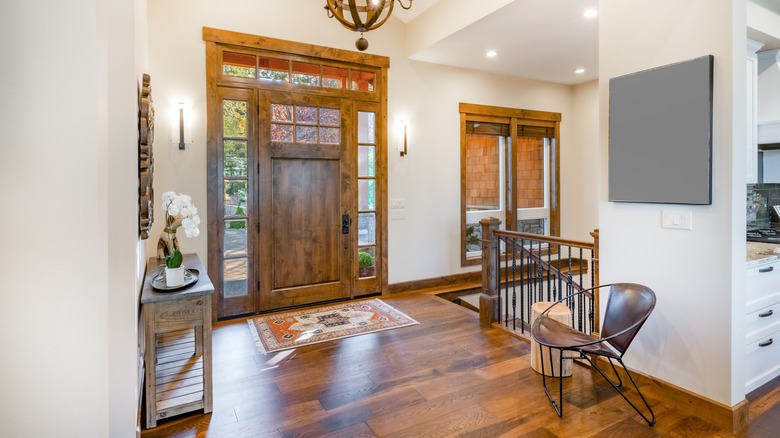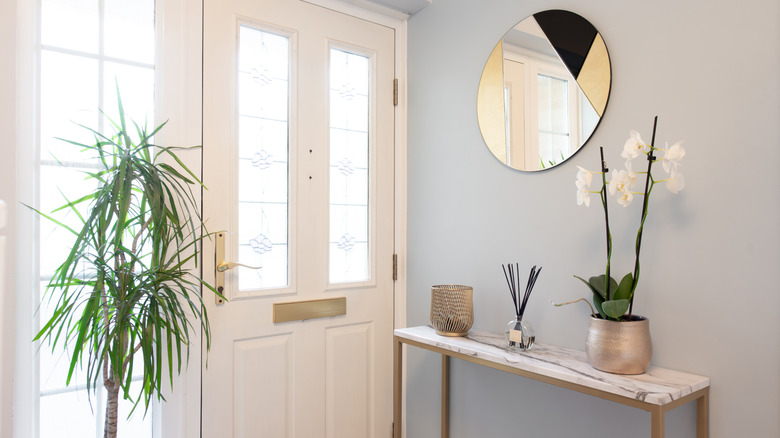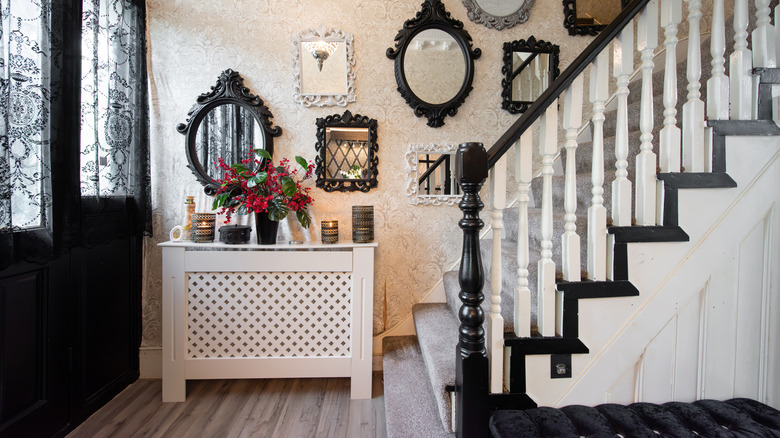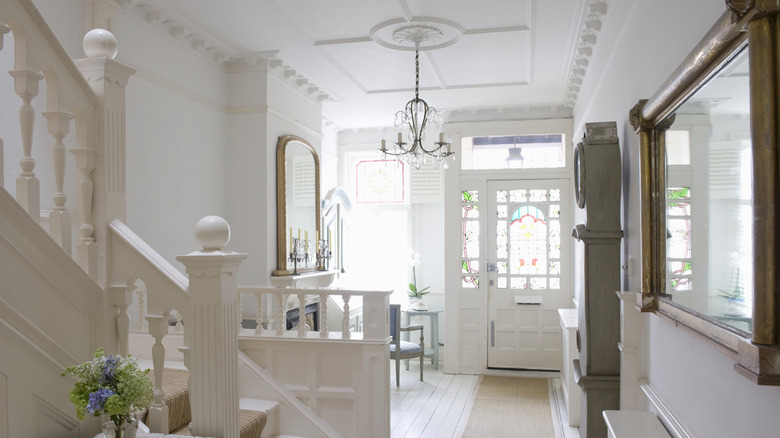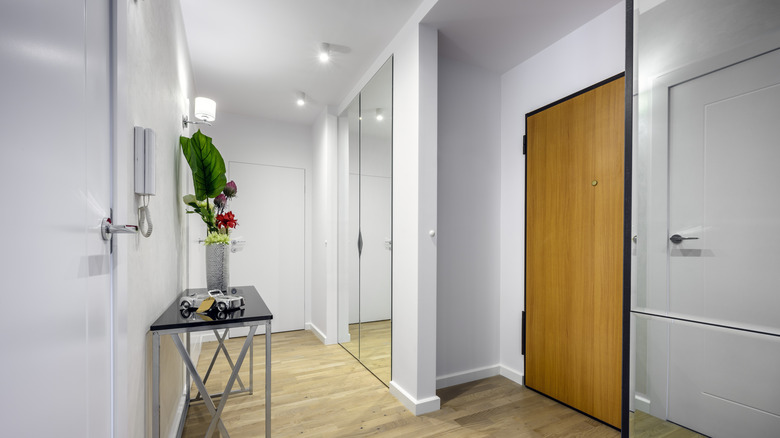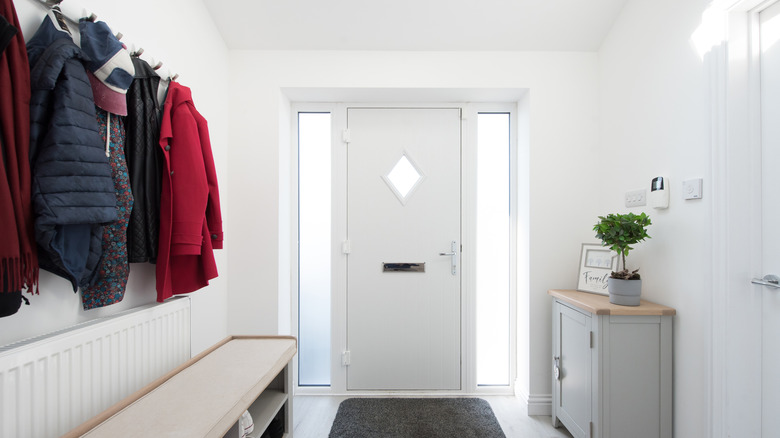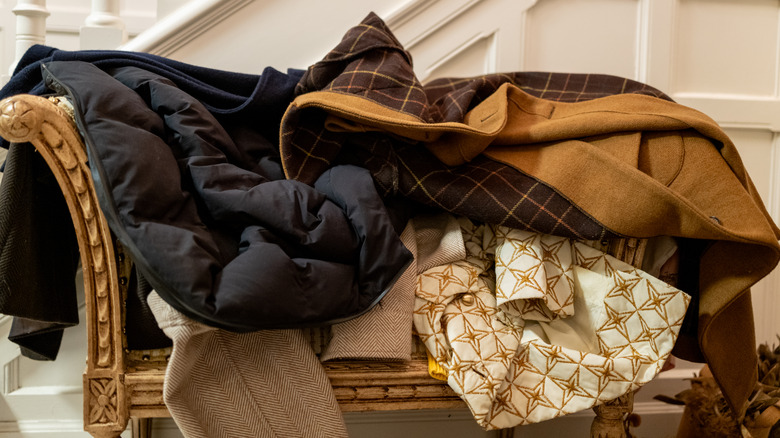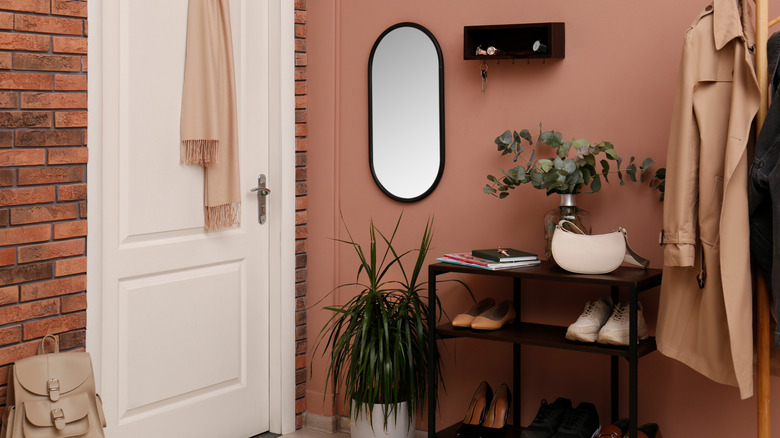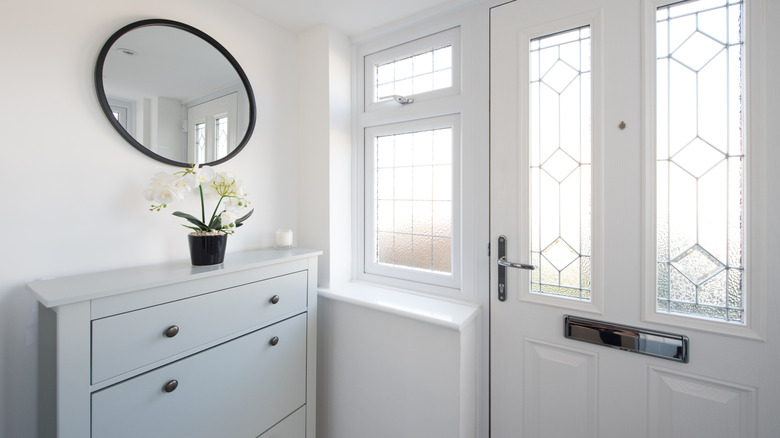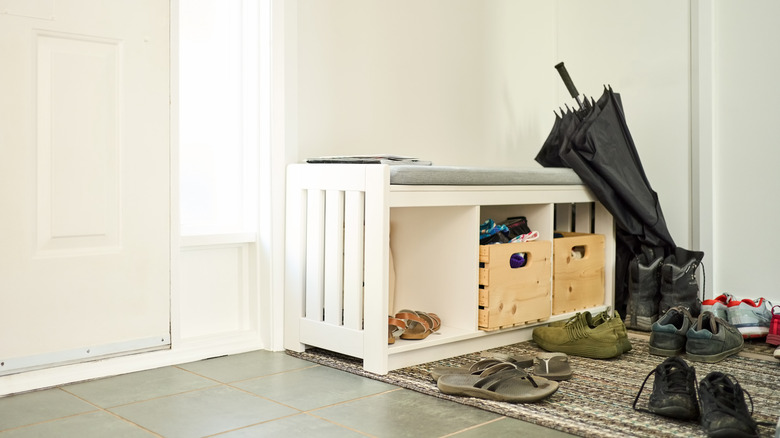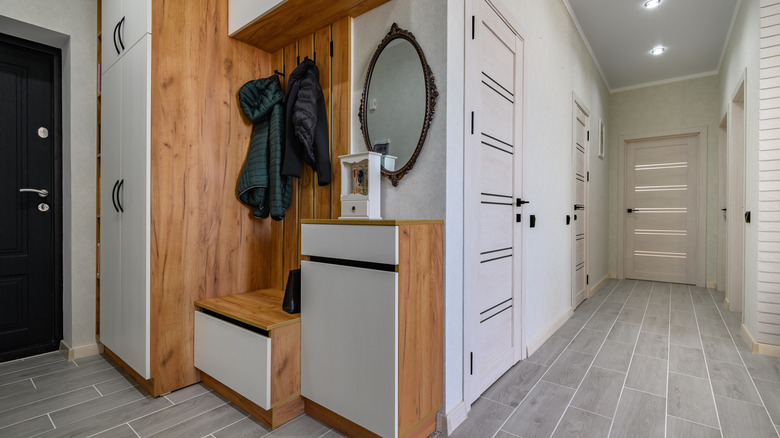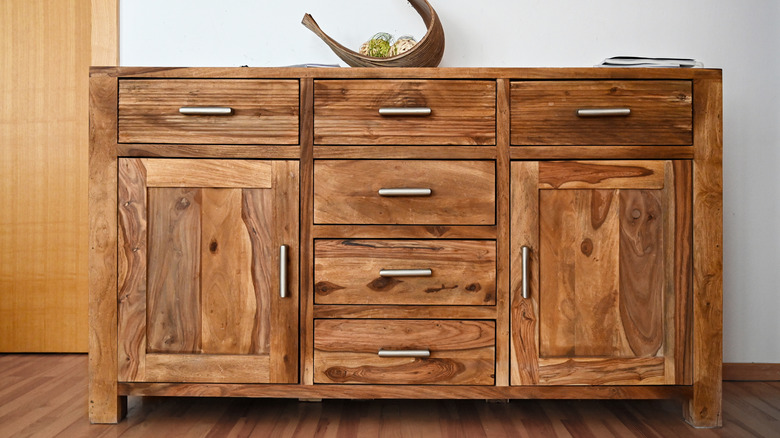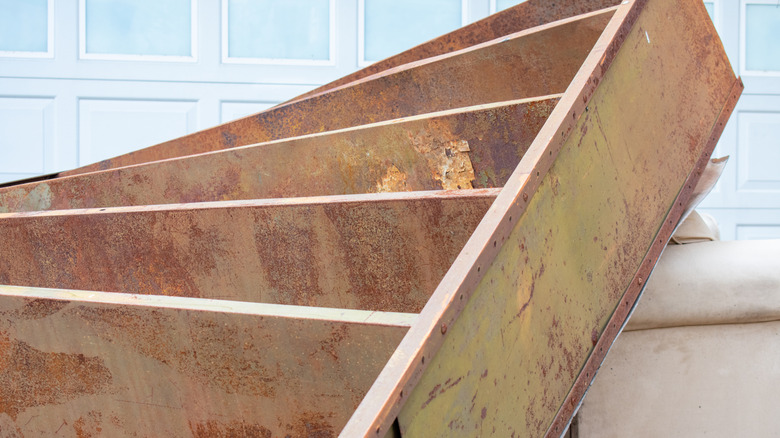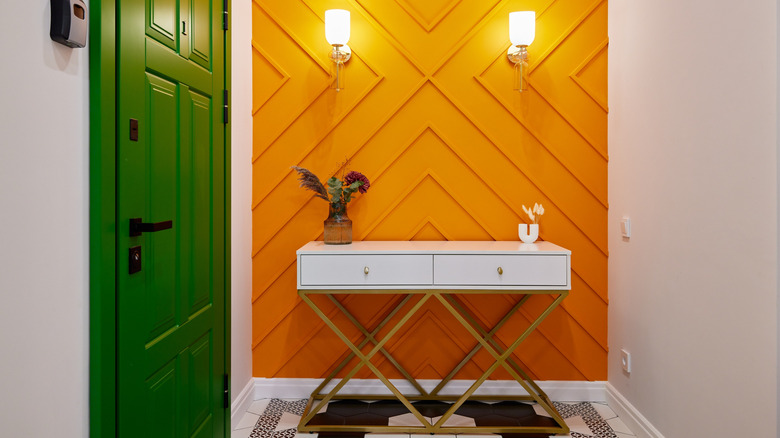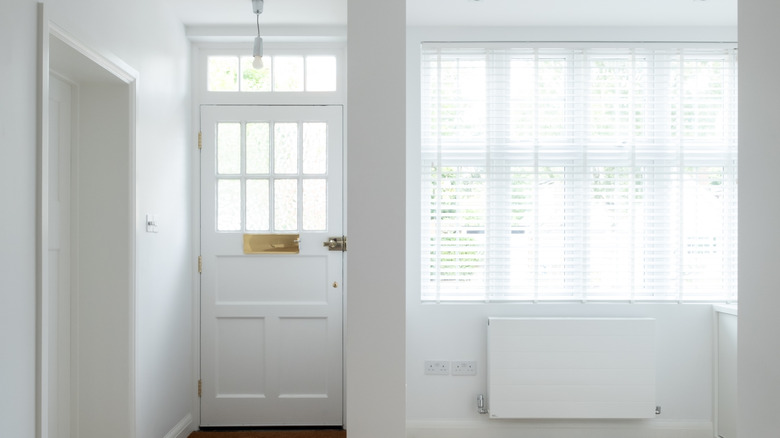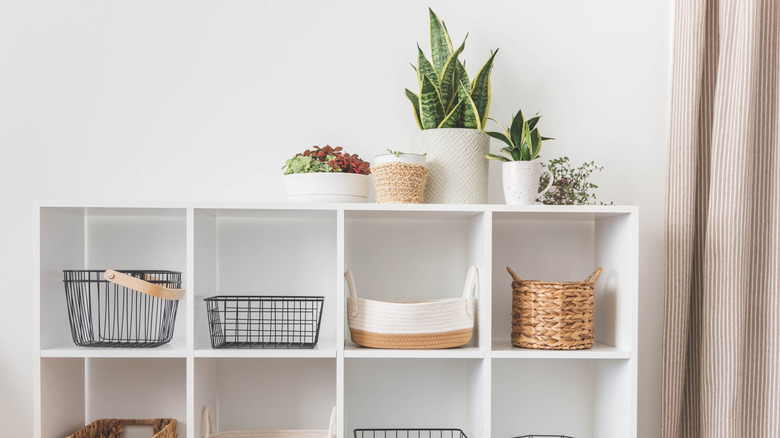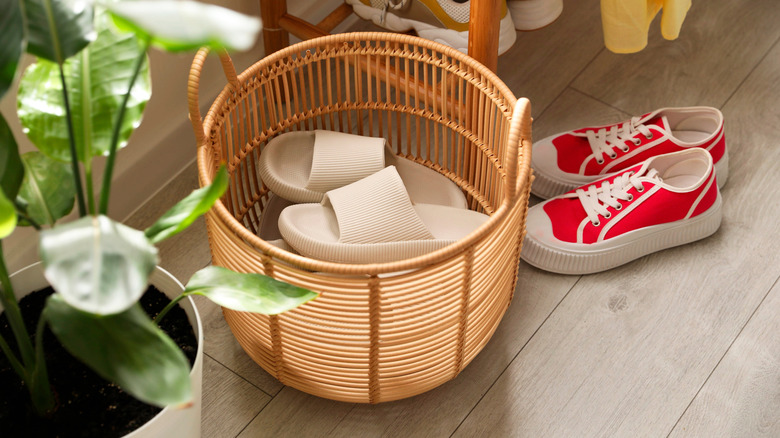The 11 Biggest Entryway Design Trends For 2025 (And Which We'd Skip)
Biophilic, sustainable, and character-forward designs are dominating home styling efforts in 2025, and the entryway is no exception. In fact, your entryway may actually be one of the most important places in your home to invest some time and intentional design. It's the first place your family and guests get a taste of what you — and your home — are all about.
However, it isn't just the aesthetic that matters in the way you style the welcome wagon of your home. If our functional spaces are the workhorses of our homes, then our entryways are clydesdales. They have to work, and they have to work hard. Particularly if you have pets or children, and especially if you don't have a mudroom. So how can you create an efficient work horse with plenty of panache? Play with the details. Don't add just any old mirror or table, or let your recessed lighting define your space as bland. Do seek out personality and functionality in your entryway pieces. Craft the space with the intention and care you would in any other room. In other words, (and perhaps most importantly) don't ignore your entryway.
Do: Add a statement piece
Use framed art, an interesting sculptural piece, or an ornate mirror to fearlessly showcase your character in the room that greets your guests on your behalf. Perhaps a wreath that speaks to your love of gardening. Or a painting of the Mexican ruins from your last vacation. Maybe a brightly painted cast of a prairie bison to suggest your love of the Great Plains. Mount this element on the wall to give it pride of place, and allow it to act as a vibe guide around which you can construct the rest of the room.
Don't: Set everything on a table
Yes, a photo of your beach vacation, a seashell bordered mirror, and your dolphin sculpture all play to your personality. But setting them out on a side table next to your front door doesn't quite qualify as intentional design. Foremost, perhaps, because it would be easy for them to fall and suffer damage. But equally important, a collection of pieces on a table can drift toward looking cluttered — and that's exactly what you're trying to avoid in a functional and stylish entryway. Hang them instead.
Do: Incorporate seating
A bench or chair near your front door is an ideal way to give guests or family members a clear and comfortable place to put on their shoes or remove muddy boots. It's also a wonderful design opportunity. Go for a wooden folding chair with a leather seat and back to play into your rustic style, or add velvet cushions to an old wrought iron bench for a luxurious twist on an otherwise industrial-feeling seat.
Don't: Settle for a console table
When styling your entryway, a console table seems like a natural fit for often small spaces. However, they offer very little in terms of functionality. In fact, they almost invite clutter and general disorganization because there is a place to set things, but there isn't really a place where the things belong. Instead of a table, look for a piece that has drawers or cabinets — or get creative and repurpose a worn-out desk.
Do: Add interest and style with a rug
Bringing pattern and color to your entryway space with a rug is a great way to give it some vibrancy and character. Not to mention the value of a soft place to shed wet boots. However, you may not want your family or guests drying their muddy shoes on your expensive wool rug. The solution? Layer a smaller, absorbent, utilitarian version over the top of a bigger, statement rug. Or, incorporate inlaid tile with a stylish and functional rug on top.
Don't: Put down a small rug
Even if you have a narrow or small entryway, an itty bitty square of rug in front of the door does not exactly scream "warm welcome". In fact, it can feel like you just flopped a piece of material down and walked away. Of course, small spaces require creative solutions in situations like this, so instead of a rug that just reaches the edges of your door, go for one that stretches all the way to the walls. Or, consider using a long hallway runner in your entryway.
Do: Add greenery
Incorporating indoor foliage in your home décor is a tried and true way to breathe life into any space. A tall fern in the corner behind the door will add interest and height when viewing your entryway from inside your home, while a pair of cascading vines hanging on either side of your statement mirror will certainly level up the look. Flowers, of course, will add to the visual appeal — and with an added bonus. They'll give a great whiff of sweetness to you and your guests as they come in the door.
Don't: Skip fragrance
The smell in your entryway also leaves a strong first impression on your guests. It's no wonder that the place where wet jackets, dog leashes, and dirty boots are stored can get a little funky from time to time. But you hardly want that to be the first impression of your home. To combat any potential unpleasant smells, use essential oils, naturally scented candles, or even sticks of cinnamon arranged in a bud vase to give a warmer, cleaner olfactory welcome. You could even create a signature home scent for your design style.
Do: Add a chandelier
Lighting is an essential part of home decor, and it's just as true in the entryway as anywhere else. Even if you have a naturally well lit space, adding a chandelier will level up your guest's perception of your home as soon as they enter. An interesting light fixture dripping with crystals will radiate a sense of glamor, while a black, drum chandelier will give a "clean and modern" impression. What's more, even in bright spaces, a well-considered hanging light fixture can help to spread light into dark corners or closet spaces.
Don't: Rely on overhead lighting
Recessed and other overhead lighting solutions are fine — even necessary — in certain spaces in our homes. But they're rarely ideal, and the entryway is no different. Overhead lighting can feel harsh, sterile, and can cast heavy shadows. The effect on faces is generally a less-than-flattering sunken look that's certainly not ideal for receiving family or visitors at your front door. If a chandelier is not an option in your space, consider adding wall sconces or lamps to diffuse the light and lend a more flattering glow to everything in the area.
Do: Use hooks
Clutter can be enemy number one for stylish and functional entryways, and it can be an almost-constant battle to keep it in check with family and friends coming and going through the same space various times a day. Our first instinct is to unburden ourselves of backpacks, purses, groceries, leashes, jackets, umbrellas and the like before we move further into the home. Which is why hooks are practically obligatory in entryways. Choose a style to match your overall look, and give your family and friends an obvious place to store their respective accoutrements.
Don't: Assume a bench will do the job
Yes, of course the bench or cabinet in your entryway can act as a drop zone. But that might actually contribute to the problem. Once shrugged from the shoulders, a jacket has a lower likelihood of making a second move off the bench and into the closet. The same goes for purses and backpacks. This means your well-organized and beautifully-curated entryway space can be reduced to a cluttered mess in a matter of moments. It's definitely better to stick with hooks or a coat rack.
Do: Incorporate bold colors
Because they're often relatively small spaces compared with the rest of the house, an entryway might just be the perfect place to ditch the gray paint and try these trendy colors for 2025. Go for a warm, chocolatey color or get creative with an elegant, emerald green. Go brazenly into the bright side of the color palette and play with a more unexpected choice like dark purple or a rusty orange. Why not? If you change your mind in a couple of months it won't take much to switch it out again.
Don't: Go for all white
We have long been told that white makes spaces look bigger, so it's understandable that we've leaned that direction for cramped quarters like entryways. However, there's a dark side to painting such a high-utility space in such an unforgiving color: White will show everything. Fingerprints from dirty hands supporting little bodies while they take off their shoes, scuff marks from pulling work boots on and off, nicks and scratches from trying to get the leash on the dog — all of it will be obvious with bright white paint. It's better to embrace some color instead.
Do: Add storage options.
A well-organized entryway is already much more stylish than a cluttered one, and the best way to combat clutter is to provide ample storage. If a cabinet or desk won't quite work in your space, consider a storage bench or bookshelf. Not only will you be adding precious organizational space, you'll also be giving yourself additional styling opportunities. Add vertical dividers to create staggered storage cubbies, then fill the remaining spaces with decorative elements. Or, create storage boxes for each family member and give them a dedicated space on the shelf.
Don't: Overcomplicate your storage
It may be tempting to fit your entire entryway with highly specific storage solutions for everything from backpacks to dog toys. However, entryways are more of a pass-through than a hang-out-and-hunt-for-something kind of space. Keep your storage simple, accessible, and visible. Open hooks, boxes without lids that slide discreetly into storage cubbies or under cabinets, and labeled baskets will make it easier for the whole family — and even guests — to participate in keeping your entryway clutter-free.
Do: Add interesting furniture
Since you need a place to sit, a place to hang things, and a place to store things, why not choose pieces that reflect your personality and align with current design trends? Repurpose a vintage dresser as a storage piece and display table in your entryway. Or salvage and refinish a pair of old, ornate dining room chairs as your seating solution. Make a coat rack out of a uniquely shaped tree branch, or upcycle a pallet into off-the-floor shoe storage. Get creative and make your entryway unique to you.
Don't: Use mass produced furniture
The problems with big box store furniture in the entryway are the same problems as anywhere else in the house. Mass-produced furniture offers very little in the way of charm or style, is more prone to breaking down over time, and is rarely gentle on the environment. In some ways, it's the antithesis of 2025 design trends that favor sustainability, durability, and character. So skip the big box stores (and the headache of replacing your furnishings every couple of years) and hit up a real estate auction or vintage furniture store instead.
Do: Make the walls a part of the design
Adding color and artwork to your walls are easy ways to reinvigorate your entryway, but it doesn't take a whole lot more to make your walls the art. Use picture frame molding to create interesting designs on your walls. Large squares will lend a traditional vibe to your space, while long pieces at different angles can create an interesting geometric pattern. Alternatively, you could attach wood paneling for a wainscoting effect, or use an ornate trim to create a chair rail that runs around your entryway space.
Don't: Leave the walls unadorned
While they're great for creating an open and airy space, blank walls — especially light colored ones lit with recessed lighting — can look sterile and uninviting. This look wholly defeats the purpose of a warm, welcoming entryway. If you aren't interested in adding art, consider paint. If painting is not an option, check out removable wallpaper. Even a simple touch like unique wall sconces or hanging plants will elevate the visual impact of your entryway.
Do: Use defined baskets or containers to organize
Carefully curated and intentionally placed baskets can make all the difference in making your personality-infused entryway functional. Select a wide variety of basket sizes that are appropriate to your needs, and let the baskets help to keep things organized. Big baskets on the floor by the door can be obvious storage for shoes, while medium baskets on a shelf or under a bench can house hats and scarves. Small containers on top of your bookshelf or cabinet will be easily distinguishable as receptacles for keys or change.
Don't: Leave one big basket by the door
If there's only one large receptacle in your entryway (like a single big basket), even if you attach a sign with the word "shoes" on the front, it's likely that it will eventually transform itself into the Bermuda Triangle of storage. Purses get dropped in on top of shoes, dog toys mix in with school projects, and eventually you'll be digging to the bottom for the spare house key. Purposeful storage will go a long way to giving you the character-laden and highly-functional entryway of your dreams.
